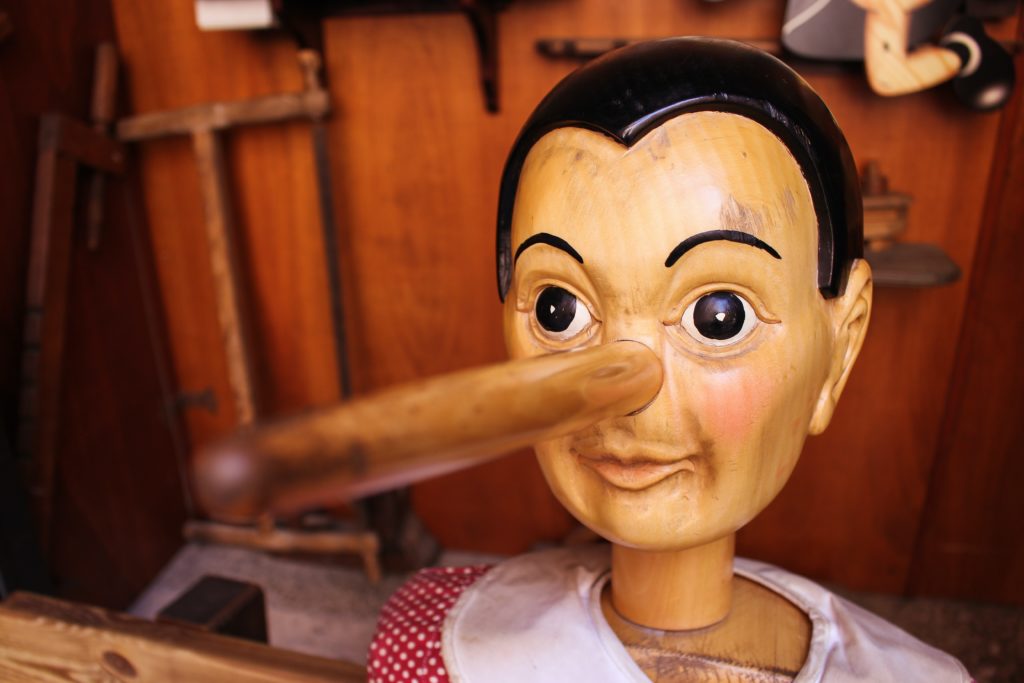Probably one of the hottest topics for social engineers is how to detect who is lying and how to improve their ability to fool their targets. Today we picked two articles to briefly discuss about this topic.

The first is archived in the social engineer archives. It is a very interesting read on a new study that has been done that might point to the link between the way a person draws an event and the truthfulness of that event. In some amazing statistics, the “sketching the agent” result was able to identify 80% of the truth-tellers and 87% of the liars – results superior to most traditional interview techniques.
How does it work? They determined that the way a person remembers an event is linked to the “angle” they draw the event in. People who were there, truth-tellers, will draw with a shoulder camera angle. Whereas liars leave out lots of detail and even leave themselves out of the picture.
What does this have to do with social engineering?
Well by itself, not much. We haven’t done too many engagements where we can ask the target to draw us a picture. So how can we use this information?
Our second article… well it’s actually a video. It is a nicely done video that outlines 9 parts to detecting a lie. What we found interesting is how closely these were linked to some of the research on the drawing research. Take a look:
Step 1: Watch their hands
Studies have shown that the majority of people have a “tell” when they lie. Excess face touching or nose scratching can be a good indicator of a lie.
Step 2: Follow their eyes
Blinking – another thought is that a person who blinks a lot can be lying. Now, we don’t prescribe to this thought 100%. Some people do not have great eye contact by nature, so this point isn’t always a given 100%. Yet, mixed together with some of the others it can point to a lie.
Step 3: Note their words
Note their words. A liar will skip contractions—saying “I did not” instead of “I didn’t”—and avoid pronouns, using someone’s full name instead of “he” or “she.”
Step 4: Check their smile
A true smile versus a fake smile. A fake smile is just with the mouth. A real smile uses the eyes, the cheeks, the whole face. A person who is fake smiling can also be an indication of falseness elsewhere.
Step 5: Note their posture
Notice their posture. Liars tend to keep their body posture closed (by folding their arms, for example). Again, we don’t prescribe to this 100%, but it may be an indication of a lie when mixed with others.
Step 6: Pause before responding
Pausing momentarily before responding; if the silence makes them uncomfortable, they may be lying. Of course, if someone is naturally slow, don’t count that. But if it looks like the person is pausing and thinking about the answers to natural questions or stories it can be a good indication.
Step 7: Note the details
Pay attention to details. If they provide more information than necessary, that’s a bad sign. People tend to be overly specific when they’re making something up.
Step 8: Change the subject
Change the subject. Is the conversation just over or are they trying to change it quickly? Pay attention and see if this indicates untruthfulness. Better yet, you can try and change the subject. Did they seem relieved? Might be an indication.
With all these steps there are a lot of “might be’s”… well mix this with reading facial expressions and you might be able to start detecting liars more readily.
We would say one key to starting off with this is to not try and view everyone as guilty before being proven innocent. Pay attention to the details though and you will be amazed at what you see.
Check out the video:
Stayed tuned for more articles coming soon.
Thanks to rAWjAW for submitting these articles to us.


Comments are closed.